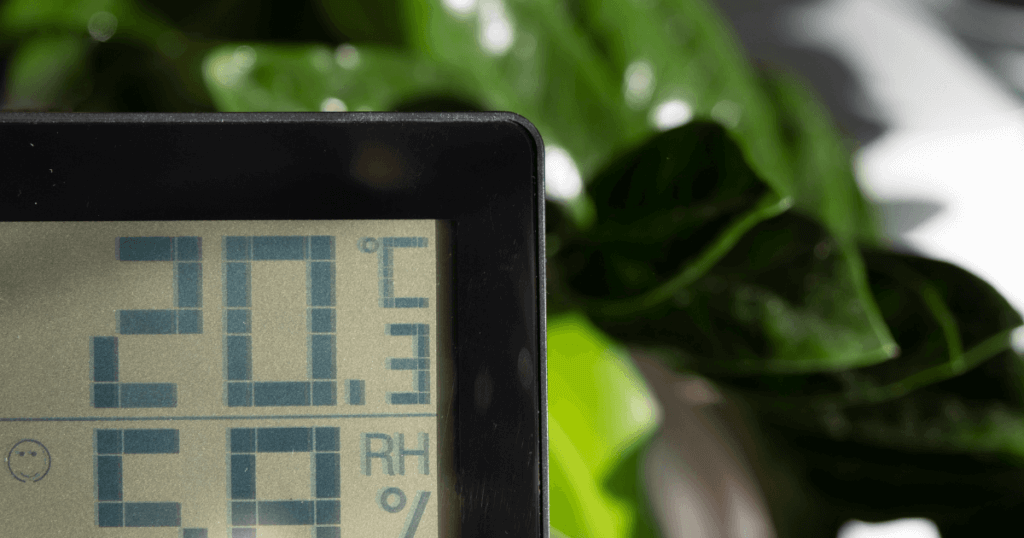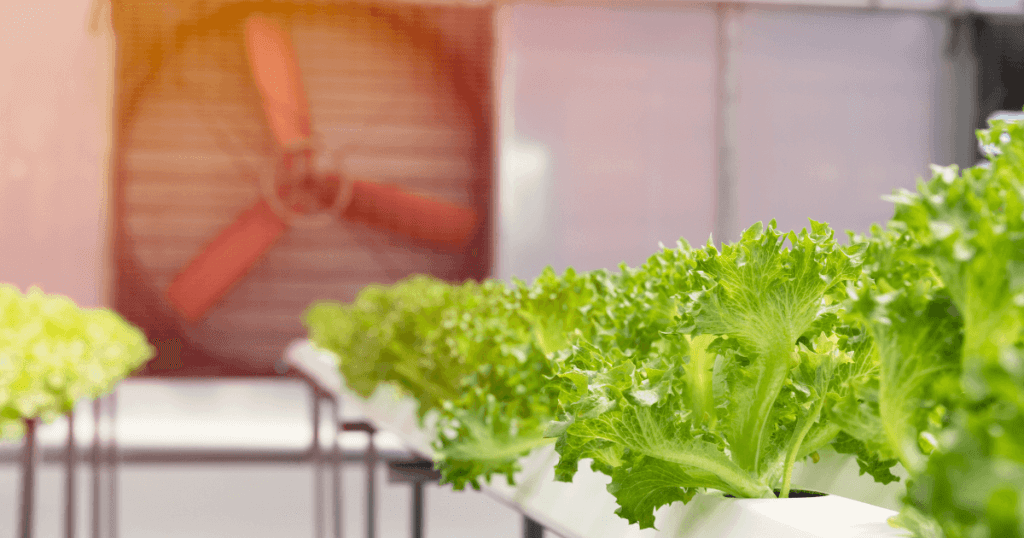Mastering Climate Control in Indoor Farming

Some of the links in this post are affiliate links. As an Amazon Associate, we earn a referral fee from qualifying purchases—at no extra cost to you.
Climate control plays a crucial role in the success of indoor farming. With the rising demand for sustainable and efficient agricultural practices, indoor farming has gained popularity. By providing a controlled environment, farmers can grow crops year-round, regardless of external weather conditions. However, achieving optimal climate control can only be challenging with the right knowledge and equipment.
In this comprehensive guide, we will explore the key aspects of climate control in indoor farming and provide valuable insights to help you master this essential technique. From temperature and humidity management to lighting and ventilation, we will delve into the intricacies of maintaining ideal growing conditions. So, let’s get started and unlock the secrets to successful indoor farming!
Table of Contents
Understanding the Importance of Climate Control
Climate control maintains optimal environmental conditions within an indoor farming facility, including temperature, humidity, light, and air quality. These controlled conditions allow farmers to create an ideal growth environment for plants, maximizing yield, quality, and resource efficiency.
Indoor farming offers numerous advantages over traditional outdoor cultivation. By controlling the climate, farmers can eliminate the dependency on seasonal changes, reduce water consumption, minimize pesticide usage, and optimize plant nutrient delivery. With precise control over various environmental factors, indoor farmers can mimic the perfect conditions for each crop, regardless of the external climate.
The Key Factors of Climate Control in Indoor Farming
1. Temperature Management
Temperature is critical in indoor farming as it directly influences plant growth and development. Each crop has an optimal temperature range at which it thrives. Farmers can accelerate growth, enhance photosynthesis, and encourage healthy root development by maintaining the appropriate temperature.
To ensure optimal temperature control, farmers utilize heating and cooling systems. These systems can be integrated with sensors and automated controls to maintain a consistent temperature throughout the day and night. Proper insulation and shading techniques also contribute to maintaining the desired temperature range.
The Inkbird ITC-308 Digital Temperature Controller is an essential tool for automating heating and cooling systems in indoor farms. It helps maintain a stable and optimal temperature range by switching devices on and off based on set parameters—perfect for growers needing reliable and precise climate regulation.
2. Humidity Regulation
Humidity refers to the amount of moisture present in the air. The right humidity level is essential for plant health, affecting transpiration, nutrient uptake, and disease susceptibility. Different crops have varying humidity requirements, and maintaining the correct balance is crucial for their growth and productivity.
Farmers employ humidifiers and dehumidifiers to control humidity, which helps adjust the moisture content in the growing environment. Additionally, proper air circulation and ventilation systems aid in humidity regulation by preventing excess moisture buildup.
The LEVOIT Smart Humidifier and Dehumidifier Combo is ideal for managing fluctuating humidity levels. It offers both humidifying and dehumidifying capabilities in one smart device, making it highly versatile for maintaining optimal moisture conditions in various crop environments.
3. Lighting Optimization
Light is one of the most crucial factors in plant growth, as it serves as the primary energy source for photosynthesis. In indoor farming, artificial lighting provides plants with the required spectrum and intensity of light throughout their growth stages.
LED (Light Emitting Diode) technology has revolutionized indoor farming by offering energy-efficient and customizable lighting solutions. Farmers can optimize plant growth, control flowering, and influence crop yield by tailoring the light spectrum, duration, and intensity. Implementing light sensors and timers ensures precise control over lighting cycles, mimicking natural day-night patterns.
The Spider Farmer SF-2000 Full Spectrum LED Grow Light delivers powerful, energy-efficient lighting for all plant growth stages. Its full spectrum output and dimmable settings make it highly suitable for tailoring light conditions in an indoor farming setup.
4. Ventilation and Air Exchange

Proper ventilation and air exchange are vital for maintaining a healthy and productive indoor farming environment. Effective ventilation systems remove stale air, control odours, and regulate carbon dioxide levels for optimal photosynthesis. Additionally, ventilation aids in temperature and humidity control, preventing the buildup of excessive heat or moisture.
Mechanical ventilation systems, such as exhaust fans, intake vents, and ducting, facilitate air movement within the indoor farming facility. It is crucial to balance air exchange rates to prevent excessive heat loss or gain while ensuring a constant supply of fresh air.
Advanced Techniques for Climate Control
Advanced techniques and technologies are available to enhance indoor farming’s climate control further. These innovations give farmers greater precision and control over the growing environment, improving crop quality and yield. Here are some notable techniques:
1. CO2 Enrichment
Carbon dioxide (CO2) is a vital component for photosynthesis. By enriching the growing environment with additional CO2, farmers can enhance plant growth and productivity. CO2 generators or tanks maintain optimal CO2 levels, typically between 800 to 1200 parts per million (ppm).
The TITAN Controls CO2 Regulator with Timer provides growers with an easy and controlled way to enrich their grow area with carbon dioxide. It’s specifically designed for indoor agriculture and helps maintain optimal CO₂ levels for faster and healthier plant growth.
2. Nutrient Film Technique (NFT)
The Nutrient Film Technique is a hydroponic system that allows plants to grow with their roots suspended in a shallow film of nutrient-rich water. This technique ensures a constant supply of nutrients to the plants while maintaining precise control over temperature and humidity.
3. Vertical Farming
Vertical farming utilizes vertical space by stacking multiple layers of crops, creating a high-density growing system. This technique maximizes space utilization and allows efficient climate control by ensuring uniform lighting, temperature, and humidity across all layers.
4. Automated Climate Control Systems
Advanced automation systems integrate sensors, controllers, and actuators to monitor and regulate climate conditions in real time. These systems adjust temperature, humidity, lighting, and ventilation parameters based on predefined setpoints, ensuring precise and consistent control over the growing environment.
The AC Infinity Smart Controller 69 PRO is a centralized climate automation system that monitors and adjusts temperature, humidity, and airflow in real time. With app-based control and intelligent presets, it’s perfect for streamlining environmental management in advanced indoor farms.
5. Data Analytics and AI
Data analytics and artificial intelligence (AI) technologies have transformed indoor farming by providing valuable insights and predictive capabilities. By analyzing sensor data, AI algorithms can optimize climate control parameters, detect anomalies, and predict crop growth patterns. This enables farmers to make data-driven decisions for improved resource efficiency and higher crop yields.
Conclusion
Mastering climate control is crucial for achieving success in indoor farming. Farmers can create an optimal environment that promotes healthy plant growth and maximizes crop yield by understanding the significance of temperature, humidity, lighting, and ventilation. Implementing advanced techniques and technologies further enhances climate control precision and efficiency, leading to sustainable and productive indoor farming practices.
Remember, climate control is just one piece of the puzzle in indoor farming. Other factors, such as crop selection, nutrient management, and pest control, also play significant roles in overall success. Combining all these elements and staying updated with the latest advancements, you can become a proficient indoor farmer and reap the rewards of year-round sustainable cultivation.
So, start implementing climate control techniques in your indoor farm today and unlock the full potential of your crops!
FAQs – Climate Control
1. How does climate control impact water usage in indoor farming?
Climate control helps regulate humidity levels, reducing excessive evaporation and optimizing water usage. Systems like closed-loop hydroponics and dehumidification recapture water from the air, making indoor farming significantly more water-efficient than traditional agriculture.
2. What are the cost implications of implementing climate control systems?
The initial investment in climate control technology—such as HVAC, automated sensors, and lighting systems—can be high. However, long-term savings in energy, water, and resource efficiency often offset these costs, improving overall profitability.
3. Can climate control improve the nutritional value of crops?
Yes, precise climate control can enhance nutrient absorption, stress tolerance, and photosynthesis, leading to higher levels of vitamins, antioxidants, and other beneficial compounds in crops.
4. How does climate control contribute to disease prevention?
Proper ventilation, humidity regulation, and temperature control reduce the risk of fungal growth, bacterial infections, and pest infestations, minimizing the need for chemical pesticides.
5. What are the best climate control practices for energy efficiency?
Using LED grow lights, integrating energy-efficient HVAC systems, implementing automated monitoring, and utilizing renewable energy sources (e.g., solar panels) can significantly reduce energy consumption while maintaining optimal growing conditions.
Other useful Sites related to Climate Control In Indoor Farming
- Controlled-Environment Agriculture (CEA): This Wikipedia article offers an in-depth overview of CEA, including technologies like hydroponics, aeroponics, aquaculture, and aquaponics, all of which are integral to indoor farming. citeturn0search5
- Open Agriculture Initiative: This Wikipedia page discusses the Open Agriculture Initiative’s development of the “Food Computer,” a controlled-environment agriculture platform that uses soilless agriculture technologies and climate monitoring to optimize crop production indoors. citeturn0search6
- Urban Agriculture: This Wikipedia article explores various methods of urban agriculture, including indoor farming, and highlights the importance of climate control in maximizing yields and ensuring year-round cultivation in urban settings. citeturn0search7
- Electro-Agriculture and Vertical Farming: This Food & Wine article delves into innovative farming technologies like electro-agriculture, which allows crops to grow in complete darkness, and vertical farming, both of which rely heavily on precise climate control to optimize growth conditions. citeturn0news16
- Vertical Farming Benefits: This Guardian article discusses how vertical farming techniques, which involve growing crops indoors in stacked layers, can save space, and water, and reduce emissions, all while increasing yield, emphasizing the role of climate control in these systems. citeturn0news17




